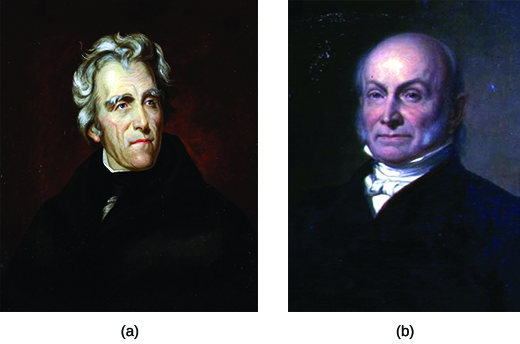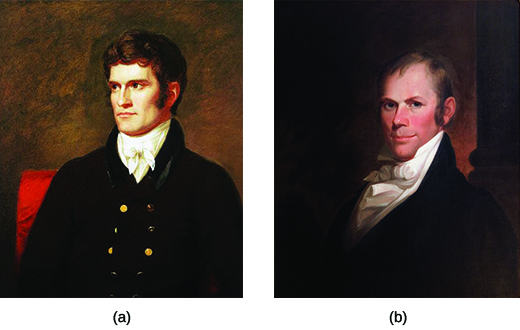| << Chapter < Page | Chapter >> Page > |

Results from the eighteen states where the popular vote determined the electoral vote gave Jackson the election, with 152,901 votes to Adams’s 114,023, Clay’s 47,217, and Crawford’s 46,979. The Electoral College, however, was another matter. Of the 261 electoral votes, Jackson needed 131 or better to win but secured only 99. Adams won 84, Crawford 41, and Clay 37. Because Jackson did not receive a majority vote from the Electoral College, the election was decided following the terms of the Twelfth Amendment, which stipulated that when a candidate did not receive a majority of electoral votes, the election went to the House of Representatives, where each state would provide one vote. House Speaker Clay did not want to see his rival, Jackson, become president and therefore worked within the House to secure the presidency for Adams, convincing many to cast their vote for the New Englander. Clay’s efforts paid off; despite not having won the popular vote, John Quincy Adams was certified by the House as the next president. Once in office, he elevated Henry Clay to the post of secretary of state.
Jackson and his supporters cried foul. To them, the election of Adams reeked of anti-democratic corruption. So too did the appointment of Clay as secretary of state. John C. Calhoun labeled the whole affair a “ corrupt bargain ” ( [link] ). Everywhere, Jackson supporters vowed revenge against the anti-majoritarian result of 1824.

Secretary of State Clay championed what was known as the American System of high tariffs, a national bank, and federally sponsored internal improvements of canals and roads. Once in office, President Adams embraced Clay’s American System and proposed a national university and naval academy to train future leaders of the republic. The president’s opponents smelled elitism in these proposals and pounced on what they viewed as the administration’s catering to a small privileged class at the expense of ordinary citizens.
Clay also envisioned a broad range of internal transportation improvements. Using the proceeds from land sales in the West, Adams endorsed the creation of roads and canals to facilitate commerce and the advance of settlement in the West. Many in Congress vigorously opposed federal funding of internal improvements, citing among other reasons that the Constitution did not give the federal government the power to fund these projects. However, in the end, Adams succeeded in extending the Cumberland Road into Ohio (a federal highway project). He also broke ground for the Chesapeake and Ohio Canal on July 4, 1828.

Notification Switch
Would you like to follow the 'U.s. history' conversation and receive update notifications?